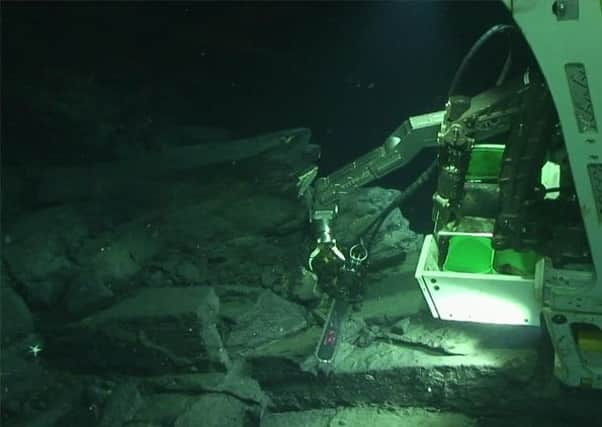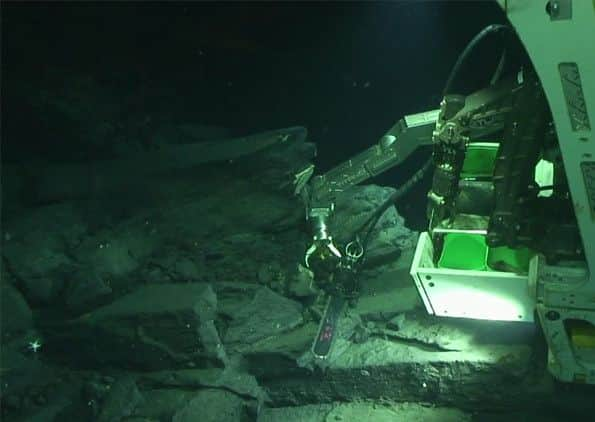Basalt rock column discovered below Norwegian Sea


The remarkable discovery of the 100 metre thick seam of columnar basalt - similar to the formations at the Giant’s Causeway in Northern Ireland and the Hebridean island of Staffa - was made during oil industry surveys last summer off the Norwegian coast. But details of the discovery have only now been made public by the Norwegian Petroleum Directorate.
The column was filmed by a remotely operated vehicle (ROV) launched from the survey vessel Seabed Worker on the Gjallar Ridge at depths of up to 2900 metres. The Norwegian Sea is located between the North Sea and the Greenland Sea and joins the North Atlantic to the west of the Barents Sea.
Advertisement
Hide AdAdvertisement
Hide AdRobert Williams, a palaeontologist with the Norwegian Petroleum Directorate, said: “We knew there was basalt in the Norwegian Sea – but we were still surprised when we found 100-metre thick columnar basalt underneath the extrusive basalt which covers large areas in the western Norwegian Sea.


“We took samples from the southern extension on the Gjallar Ridge, at depths from 2200 to 2900 metres, and from Vøringsutstikkeren, at depths from 2800 to 3550 metres.”
Her said the survey had found the columnar basalt in the south-western part of the Gjallar Ridge in the western Norwegian Sea. It was similar to the columns found at the Giant’s Causeway in Northern Ireland and the Devil’s Tower in America.
The columns, he explained, were created early in the formation of the North Atlantic 56 million years ago when lava penetrated the surrounding sedimentary mudstone and then cooled, forming columnar basalt. “The sedimentary rocks were not impacted significantly by the heat from the volcanic incident,” he said.
Mr Williams added: “The examined areas are characterised by steep terrain and deep water. They are relatively unexplored, and this is the first time this area has been filmed.”
A Norwegian Petroleum Inspectorate spokesman said: “Samples were taken with an ROV fitted with a chain saw. The chain saw is actually intended for the concrete industry, but works excellently in deep waters. The sedimentary material is being analysed for fossil micro plankton by Robert Williams at the Norwegian Petroleum Directorate. Geochemical samples, test analyses and dating of columnar basalt will be handled by the University of Bergen. The results are expected to be ready this spring, and will then be published.”